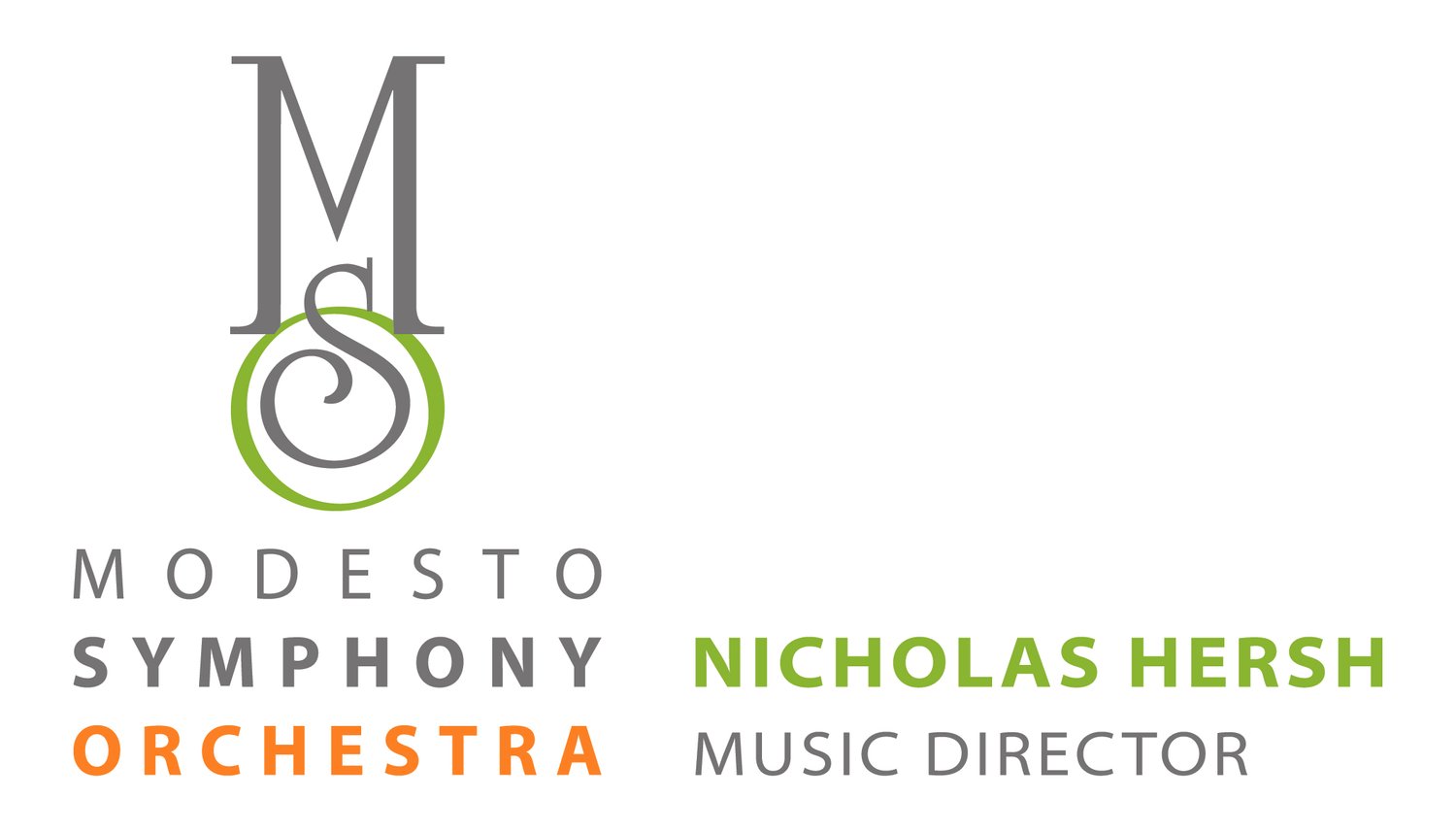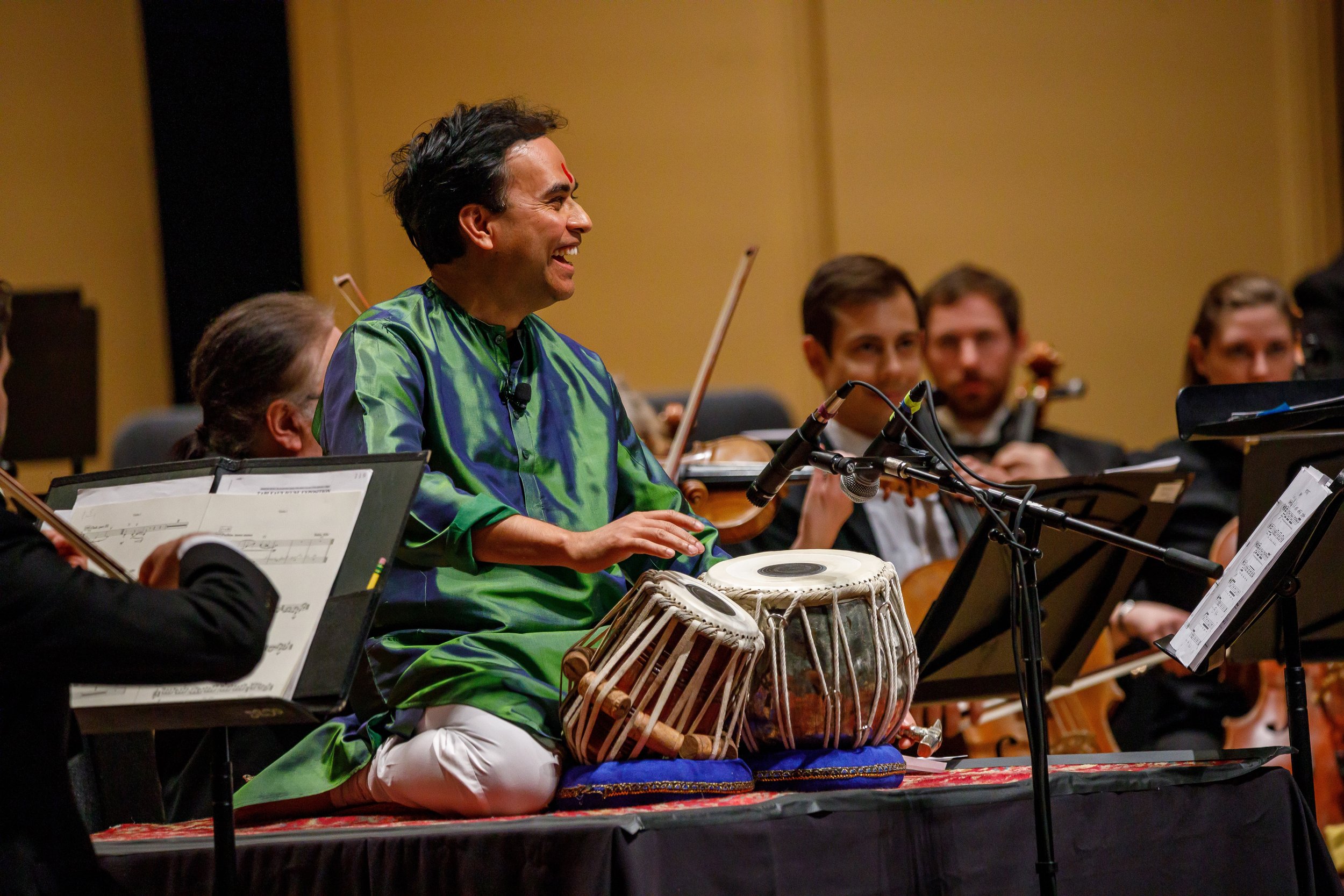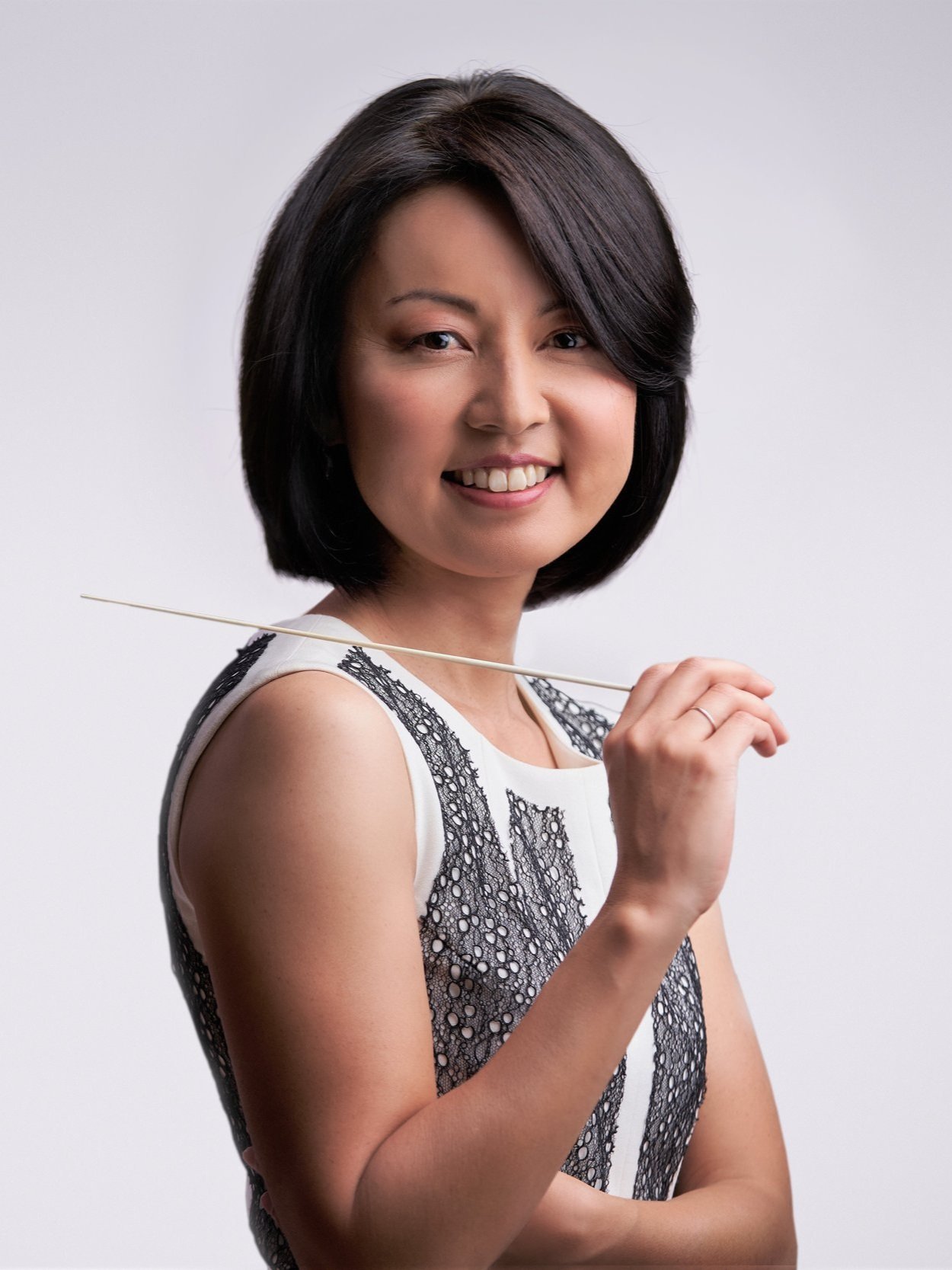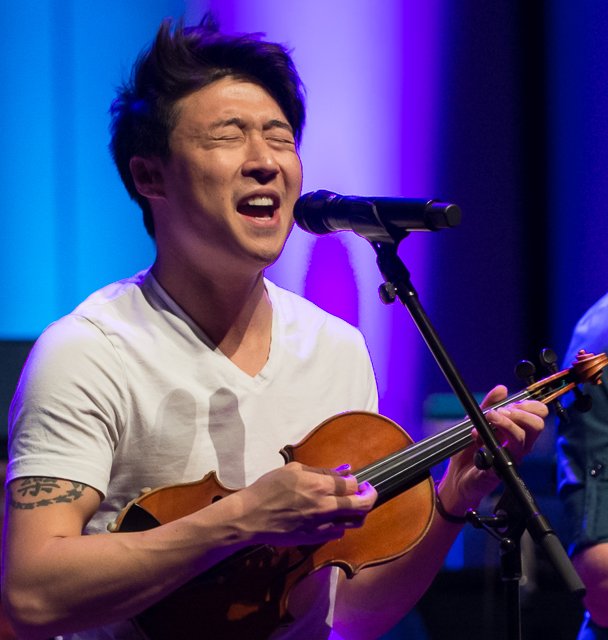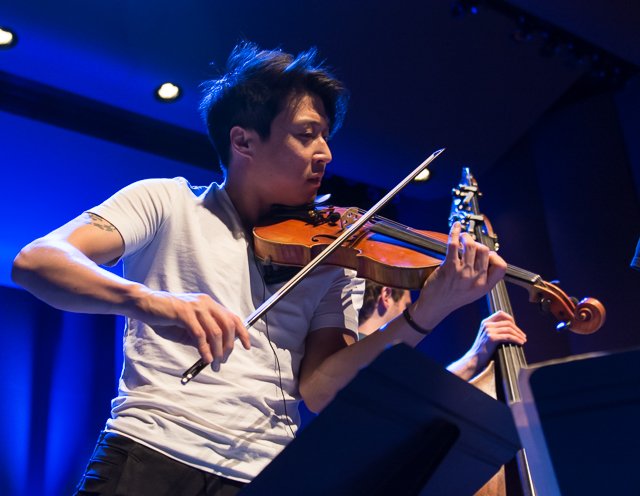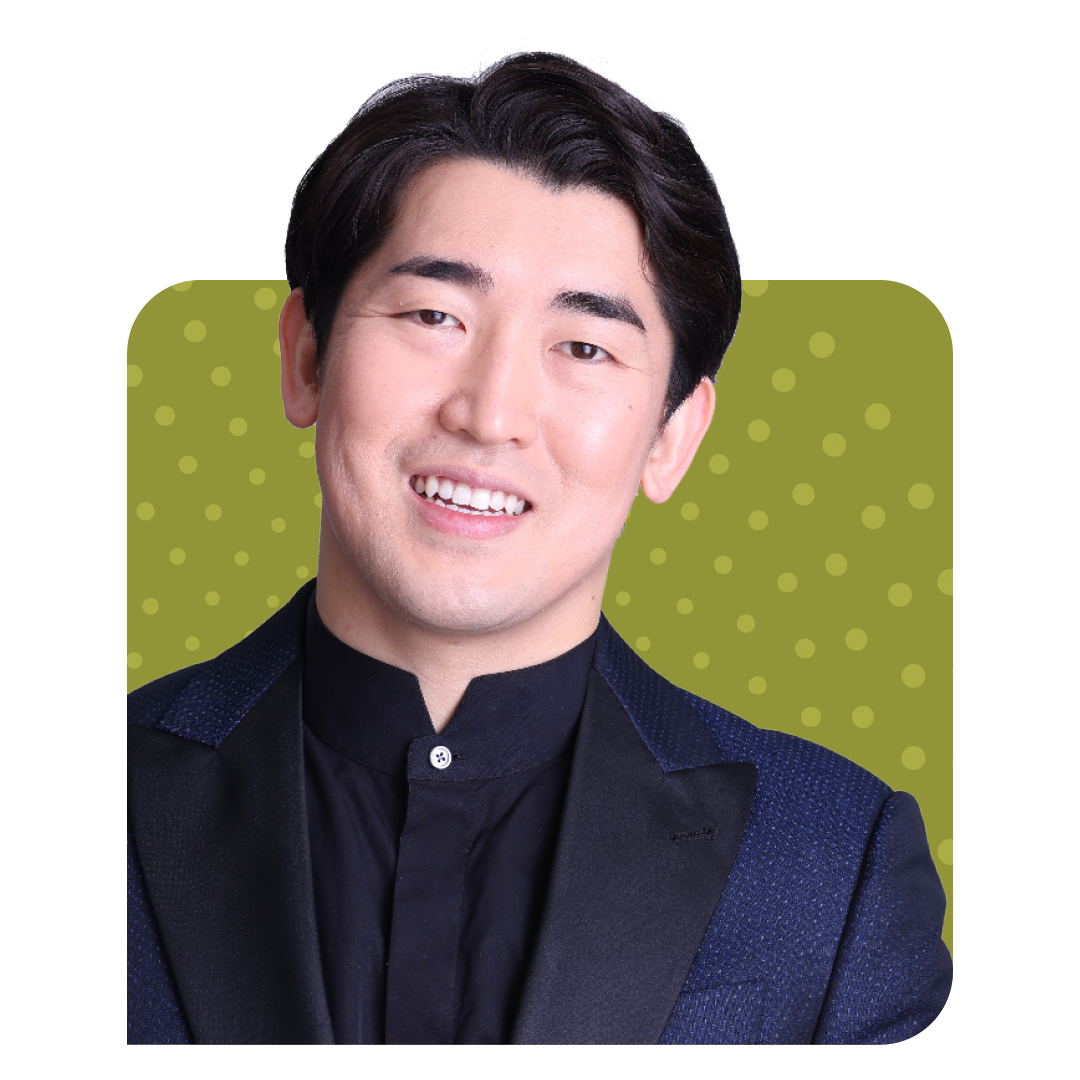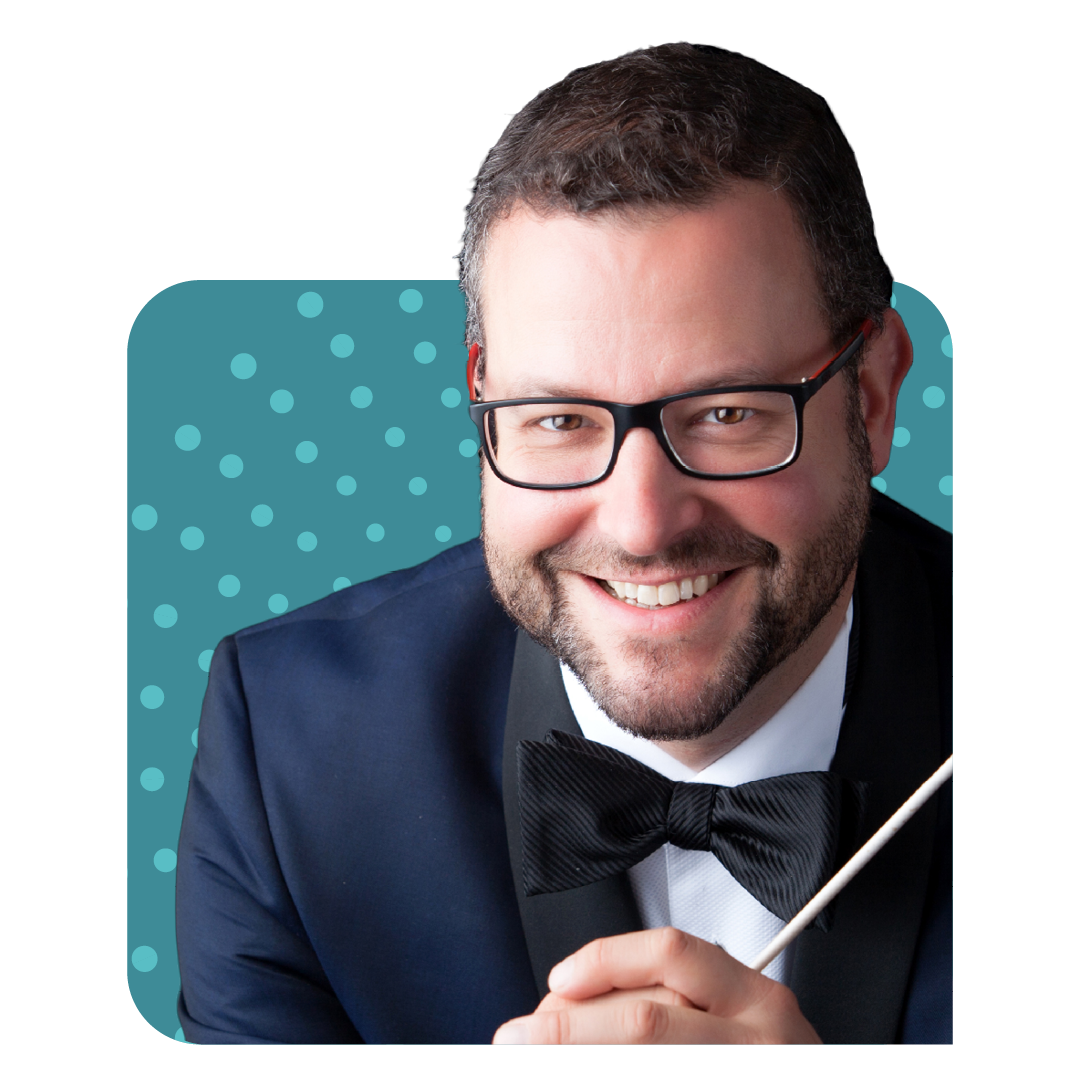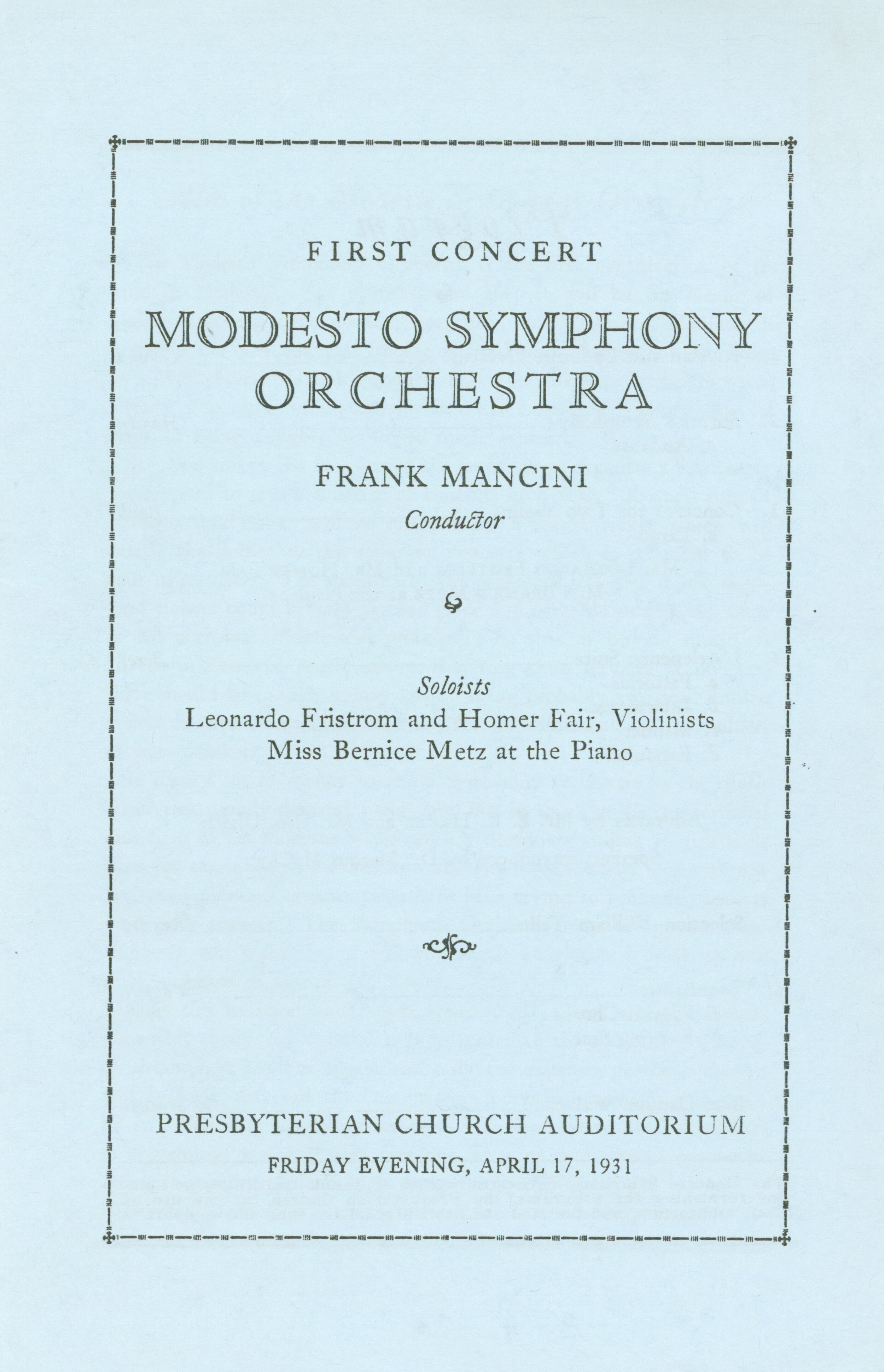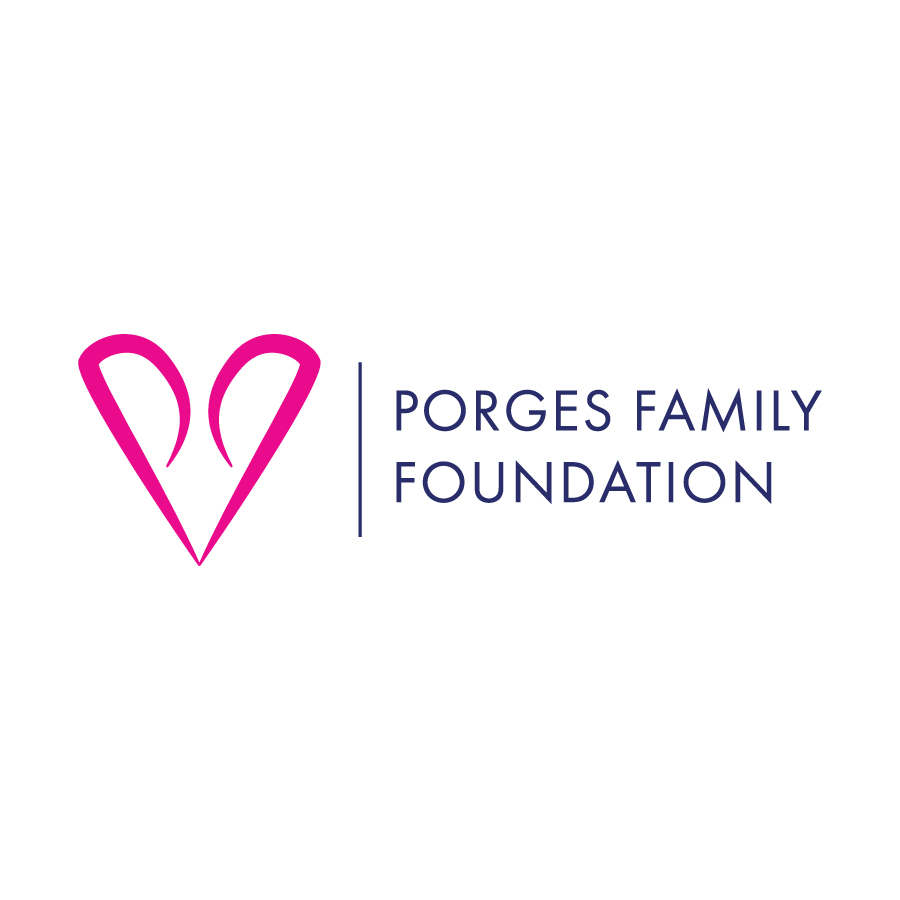May 6 & 7: Haas conducts Wijeratne & Tchaikovsky
Talking About Tabla with Sandeep Das!
Upcoming this May 6 & 7, Grammy-winner tabla master, Sandeep Das will be performing Dinuk Wijeratne’s Concerto for Tabla alongside your Modesto Symphony Orchestra. Fresh from a tour of London, Sandeep took the time to sit down with us to tell us more about this exciting concerto and his instrument, the tabla.
MSO: This is the first time most of our audiences will see this piece performed live, however you have performed this many times before. What is your history with this piece, when was the last time you performed it?
Sandeep Das: I am actually coming in to Modesto right after a tour of this very concerto with the National Youth Orchestra of the United Nations in London, U.K. I feel Dinuk Wijeratne’s Tabla Concerto is one of the finest Western compositions written for my instrument, and I am looking forward to sharing it with everyone in the audience!
MSO: The tabla is an instrument not often highlighted in Western Classical music. Can you tell us more about this instrument, how you got into it, and how it had led you to where you are today?
SD: The Tabla are one of the most popular drums in the North Indian Classical tradition, a complex and highly refined music system that has been passed down orally for more than 4,000 years. There is a fun story about how I got into this instrument:
One day, when I was about 8 years old, I was sent home from school with a note from my teacher. I had been disturbing the class by tapping on my desk, and when asked to stop, I started tapping my feet! They suggested that I be taken to a doctor.
Luckily, I had a smart father, and instead of taking me to a doctor, he gifted me my first pair of Tabla, and my lessons began that very night.
My Guru, Pt. Kishan Maharaj, was a legend of North Indian Classical Music in the same way Bach, Beethoven, and Mozart are revered as legends of Western Classical Music. I learned Tabla in the traditional Indian Guru-Shishya Parampara, a system where the Shishya, or student, lives with their Guru (teacher) as a member of the household while they are learning.
For 12 years, I lived with my Guru in Banaras, an ancient Indian city known as a historical and contemporary center for intellectual, spiritual, and artistic learning. Music was taught to me not just as an art form, but as a way of life. Guruji would teach when and however he pleased. I was even taught while sitting in the garden, riding horses, and performing on stage with him at a concert!
MSO: Music education is something that is very important to you, which is evident through your programs like Harmony and Universality through Music (HUM) and Das Tabla School (DTS). Can you elaborate more about these programs you founded and how they help enrich the lives of your students?
SD: I strongly believe that the youth are our future, and we should do everything we can to open the windows of their hearts and minds to what is beyond the places, people, cultures, and ways of life that they know. Harmony and Universality through Music is an Indian nonprofit organization that I founded in 2009, which strives to promote global understanding through performance and education by the HUM Ensemble and provides learning opportunities and scholarships for visually-impaired children with potential in any genre of art to empower them to lead self-reliant lives. Since its inception, HUM has grown in size and now supports nine children through a National Scholarship.
MSO: Will you have any leisure time while in Northern California? Do you have any fun plans while being here? (Sights to see, places to you have to eat at, etc.)
SD: I am a golf addict and will definitely spend some time golfing!!!
MSO: Any upcoming performances/projects are you looking forward to?
SD: I recently launched a project called Transcending Borders One Note at a Time, which aims to harness the transformative power of music to spread a message of love and compassion, and to inspire positive social change through a variety of media including performances, residencies, community engagement activities, and talks/presentations. As part of that initiative, the HUM Ensemble recently released its debut album, “Delhi to Damascus”, which features a collaboration between Indian Classical and Syrian music. This project is currently touring live performances alongside “Delhi to Shiraz”, a musical celebration of the shared heritage between India and Persia.
Meet Sandeep in Modesto!
Come watch Sandeep perform Wijeratne’s Concerto for Tabla this May 6th & 7th at the Gallo Center for the Arts!
